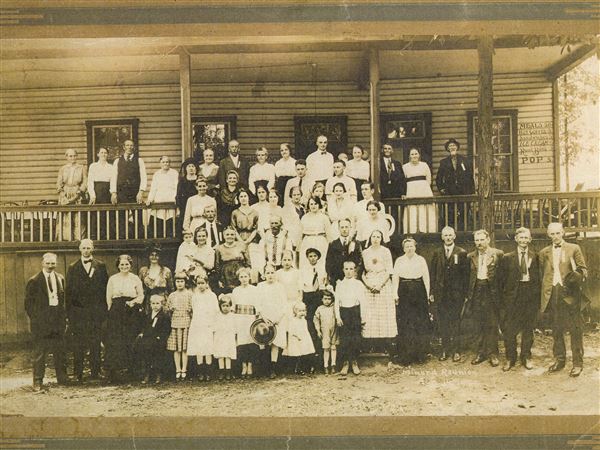OVER THE MEDITERRANEAN SEA -- Just after midnight on Sunday, an allied Mirage 2000 fighter jet prowling the Libyan coastline attacked a Libyan missile patrol boat that military officials said threatened NATO and humanitarian aid vessels in nearby waters.
The strike on the Libyan warship in the harbor at Sirt came at the end of a convoluted chain that started with political orders from Brussels, passed through two military command centers in Italy and concluded with controllers aboard this Awacs command-and-control plane 50 miles off the Libyan coast authorizing the Mirage to bomb the boat.
Two months into the Libya air campaign, allied officers insist they have worked out the kinks in an operation initially plagued by NATO's inexperience in waging a complex air war against moving targets and botched communications with the ragtag rebel army. The confusion resulted in at least two accidental bombings that killed more than a dozen rebel fighters.
As Tuesday's heavy airstrikes in the Libyan capital, Tripoli, underscored, NATO is escalating the pace and intensity of attacks on Col. Muammar el-Qaddafi's forces, trying to break an apparent stalemate in the conflict, now three months old. Yet the alliance is still short on reconnaissance planes to identify hostile targets and refueling planes to allow fighter-bombers to conduct longer missions, a senior NATO diplomat said.
French and British officials said this week that they were sending more than a dozen attack helicopters to allow for more precise ground attacks, particularly around Misurata, where loyalist forces continue to fire mortars and artillery despite rebel gains and heavy air attacks.
With no troops on the ground, NATO planners and pilots acknowledge that they often cannot pinpoint the shifting battle lines in cities like Misurata. "The front lines are more scattered," said Col. L. S. Kjoeller, who commands four Danish F-16s flying eight daily strike missions from Sigonella air base in Sicily.
Information on Libyan forces filters up from Central Intelligence Agency officers and allied special operations troops working with the rebels on the ground, as well as from the rebels themselves. But NATO planners say they have no direct contact with anyone on the ground to help coordinate the roughly 50 allied attack missions every night.
Instead, they rely on an array of imagery and electronic intercepts collected by drones, spy planes and satellites, as well as news media reports and other whispers of intelligence. These are used to build a round-the-clock campaign that allied officers say is preventing Colonel Qaddafi from making sustained attacks on rebel fighters and driving him deeper into hiding.
"We're grinding down the regime," said Maj. Gen. Stephen Schmidt, an American officer who commands two dozen NATO and British Awacs planes.
The daily strikes include targets assessed in advance, from mobile missile launchers to command-and-control sites in the capital, which NATO officials said were attacked with 28 bunker-busting satellite-guided bombs on Tuesday night. But there are also fleeting targets of opportunity, like the Libyan warship on Sunday, as well as tanks, artillery or pickup trucks outfitted with heavy guns that are spotted in hiding places, vetted swiftly and hunted down, often in minutes.
The targeting process started in Brussels in March, when NATO ambassadors approved the broad objectives of the campaign, which was authorized by the United Nations Security Council to protect civilians from attack by Qaddafi forces.
Translating those political objectives into military priorities to achieve specific results on the ground falls to NATO's southern headquarters in Naples, led by Lt. Gen. Charles Bouchard of Canada, the allied operational commander, and his British deputy, Rear Adm. Russell Harding.
"It takes time to go through and target properly," Admiral Harding said in an interview. "We decide we want to go after command-and-control or resupply routes, or we ask, where is the ammunition coming from? Where is it, what is it and what do we need to do?"
Operating from a converted ballroom once used by Mussolini, a special cell of intelligence analysts, targeting experts and other planners pull together information on possible targets.
From Naples, the authorized target list is sent to an air operations center near Bologna. There, a United States Air Force officer, Lt. Gen. Ralph J. Jodice II, oversees the delicate process of matching specific allied aircraft, armed with specific weapons, to specific targets to achieve the best effects on the ground with the least risk to civilians.
The targeting experts decide, for example, which bomb can penetrate a reinforced concrete underground bunker, at what time of day an attack poses the least risk to civilians, and whether delaying a bomb's impact a few seconds until it burrows into the ground will reduce deadly shrapnel but still destroy an ammunition depot.
For command bunkers in Tripoli, which require long periods of surveillance before striking, NATO increasingly relies on American Predator drones armed with Hellfire missiles. The drones can fly high overhead for hundreds of hours, chronicling the "pattern of life" below until allied commanders feel confident the site is a legitimate target.
Commanders begin reviewing targets 96 hours ahead and prepare a final list 24 hours before missions take off. Bombs are then loaded on planes and scores of aircraft take to the skies from bases around the Mediterranean.
Then it becomes the job of the Awacs crews to manage the scores of allied fighters, interceptors, refueling tankers and surveillance planes operating in the airspace in and around Libya.
On its overnight mission on Sunday, the Awacs plane cruised at 36,000 feet, higher than usual to avoid thunderstorms below that canceled a few missions. The rotating Frisbee-shaped radar on top of the aircraft counted 50 planes just past midnight.
In the Awacs, a windowless military version of a Boeing 707 jet, the war in Libya unfolds on the 20-inch computer screens of controllers in dark green flight suits who keep aircraft safely separated, guide them to tankers when they need fuel and keep an eye out for potential threats.
On the screens, the outlines of the Mediterranean and the Libyan coast emerge. Fighters, refuelers, jammers, reconnaissance planes and remotely piloted drones as well as commercial airliners each have different symbols: tiny white circles, yellow rectangles, check marks, dashes, dots of different colors. A mouse click on a symbol reveals the plane's altitude, speed and other information. On a separate console, a controller can follow hundreds of ships and even trucks driving along the Libyan coast.
Just before midnight, the air operations center sends a message through an encrypted chat room, asking the Awacs to direct a Mirage 2000 jet to check out suspicious vehicles near the airport in Misurata. Under the mission's ground rules, the aircraft's nationality cannot be reported.
"There are three big trucks," the pilot reports.
"Are they stationary or moving? Do you see any weapons?" asks a Canadian weapons controller.
"I am unable to identify them as military vehicles," the pilot responds, saying that rain clouds are obscuring his view.
The command center decides against an attack.
Nearly two hours later, however, a different Mirage is summoned to investigate the suspicious boat in Sirt harbor. Cleared to attack, the jet drops two bombs, the first narrowly missing, the second a direct hit.
With missions like this, NATO officials express greater confidence than ever that Colonel Qaddafi is unable to direct his forces, possibly resorting to couriers in some cases to relay strategic and operational guidance.
Even with their combat effectiveness eroding, Libyan forces try to carry out sporadic attacks on civilians and allied forces.
Adm. Samuel J. Locklear III, the overall commander of NATO forces in the Mediterranean, said from his office in Naples that the allied mission has largely achieved its goal of protecting civilians, especially in eastern Libya, and has seriously damaged the Libyan military.
"Qaddafi will never be able to turn a large army on his people again, because it's gone," said Admiral Locklear, noting that the air campaign has wiped out more than half of Libya's ammunition stockpiles and cut off most supply lines to forces in the field.
But the admiral acknowledged Colonel Qaddafi's resiliency, and said that without sustained political and economic pressure as well, "the military piece will take a very long time."
First Published: May 25, 2011, 4:00 a.m.














